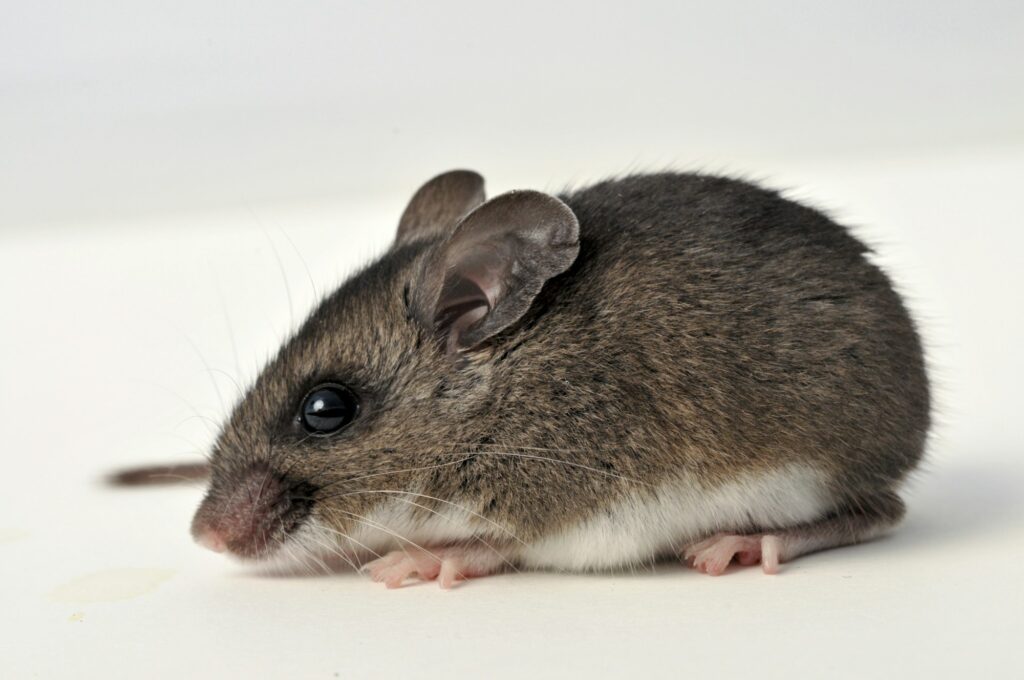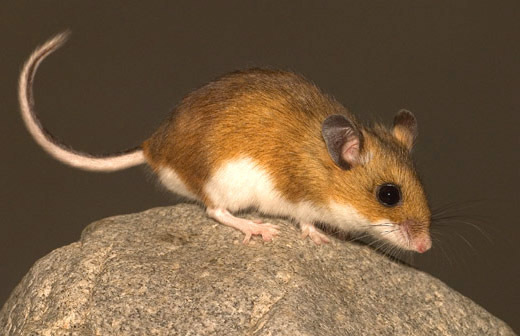Mice
- Check below to learn about the the mice commonly found in the Post Falls and Spokane area.
Common Mice In The Post Falls and Spokane Area
Did you know? Mice are incredibly flexible and can squeeze through openings as small as a 1/4 inch (about the size of a pencil) due to their ribcage being collapsible. This makes them great at getting into homes and hiding in tight spaces. Plus mice are excellent climbers and can scale vertical surfaces like walls, pipes, and even rough wood. They can jump up to 12 inches vertically and 36 inches horizontally, which allows them to easily navigate obstacles. This makes them extremely hard to keep out of homes.


House Mouse
(Mus musculus)
Appearance:
- Size: Small, slender body; about 3 1/2 inches long with a tail roughly the same length.
- Color: Dusky gray to brownish.
- Features: Slightly pointed nose, small black protruding eyes, large scantily-haired ears.
- Weight: Adults weigh up to 1 ounce.
Habitat:
- Found in a wide range of environments, including homes, farms, commercial establishments, open fields, and agricultural lands.
- Highly adaptable, thriving in both rural and urban areas.
Behavior and Activity:
- Nocturnal: Mostly active at night but may also be active during the day.
- Exploratory: Mice are curious and will explore their entire territory, often investigating new objects.
- Senses: Relatively poor vision, relying mainly on smell, taste, touch, and hearing. They use their long whiskers (vibrissae) and guard hairs to detect motion, air movement, and vibrations.
- Travel: Mice tend to run along walls, using their vibrissae to sense the wall’s location as they move.
Reproduction:
- Litter size: Up to 50 young in one year.
- Mating Age: Mice reach maturity quickly and can start mating at 6-10 weeks of age.
- Weaning: Young are weaned at 21 days.
Diet:
- Typical food: Eat a wide variety of food, including seeds, grains, and sweets.
- Particularly attracted to: High-fat foods like lard, butter, and bacon.
- Food Consumption: They nibble small amounts from various sources, totaling about 8 pounds per year.
- Water: Mostly obtain water from their food, but will drink if water is available.
Adaptability and Physical Abilities:
- Fit through small openings: Can squeeze through gaps as small as 1/4 inch.
- Climbing ability: Can scale rough vertical surfaces and jump up to 12 inches.
- Travel Routes: They can travel along horizontal wires and small ledges with ease.
Damage and Contamination:
- Structural Damage: Gnawing and nest-building activities can damage insulation, wiring, and even appliances, leading to potential short-circuits, fires, or malfunctions.
- Food Contamination: Mice contaminate food and surfaces with their urine, feces, and fur, which can lead to food poisoning.


Deer Mouse
(Peromyscus Maniculatus)
Appearance:
- Color: Brownish upper surface that turns grayish in the winter, with white feet and usually white undersides.
- Size: Larger than the house mouse.
- Tail: About the same length as the body and head.
- Features: Large eyes and ears.
Habitat:
- Found throughout most of North America.
- Common in Washington and Idaho (except at higher elevations of the Cascade Range).
- A similar species, Keen’s mouse (Northwestern deer mouse), is also found west of the Cascade Range.
- Most widely distributed mammal in North America, and present in a wide variety of habitats.
Behavior
- Deer mice will enter human-made structures to nest and search for food.
- Known to cause damage by gnawing, nest-building, and leaving droppings and urine wherever they travel.
Health Risks:
Deer mice can be reservoirs for the virus that causes Hantavirus Pulmonary Syndrome (HPS), a serious respiratory disease.
MICE FAQ's
How do you know if you have a mouse infestation?
The signs of a mouse infestation may include but are not limited to, droppings, gnaw marks, or strange sounds in the walls.
How long do mice live?
House mice typically live between 1-2 years depending on multiple factors like mice density, food, and shelter.
What do mice eat?
Mice eat a wide variety of food including grains, seeds, sweet treats and sometimes even fatty meat.
Why do mice come inside?
Mice typically come inside seeking a food or water source. Sometimes in the fall when things are starting to cool down then will come inside seeking warmth.
Are mice active during the day or night?
Mice are predominantly active during the night. Looking for food or just running around curiously. However, they are still spotted during the day on occasion.
How fast do mice reproduce?
Mice can produce up to 50 babies in one year. Those babies can begin mating themselves at around 6 weeks of age.
Can mice climb walls?
Absolutely, mice are amazing climbers and have no trouble climbing very high distances, especially if the surface is somewhat rough.

